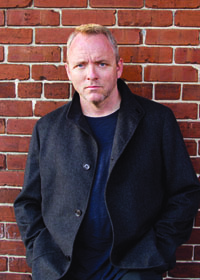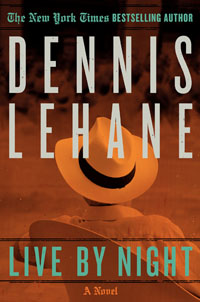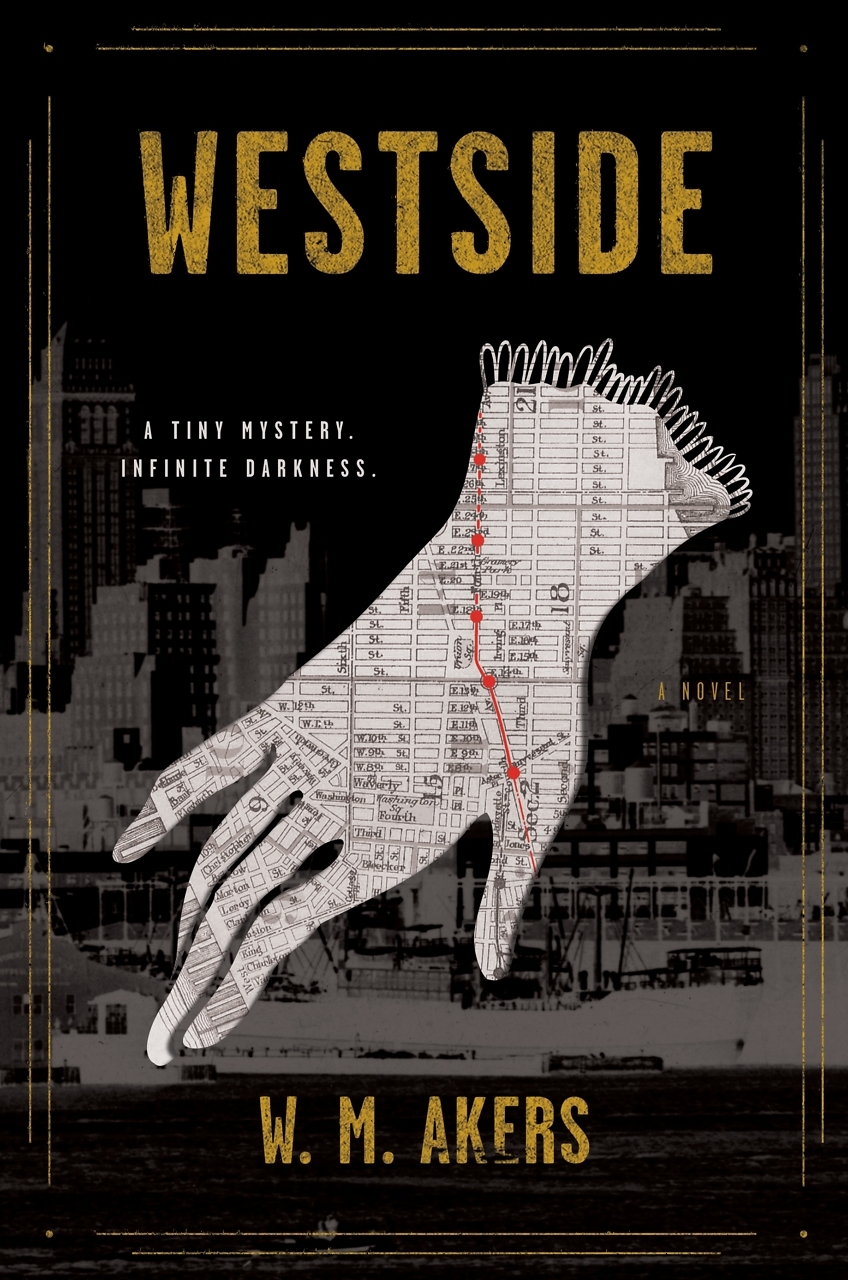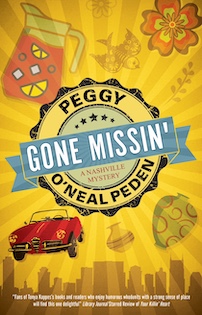Seeing Better in the Dark
In Live by Night, Dennis Lehane fuses the elements of Chandler-style noir with the grisly violence and moral ambiguity of The Godfather
Dennis Lehane built his literary reputation on postmodern thrillers that explore the lives of damaged South Boston cops, criminals, and private detectives. His masterpiece, Mystic River, marked him as a genre-bending literary artist who had achieved a rare alchemy of popular and critical appeal. Lehane’s reputation (and audience) has since grown exponentially, thanks to award-winning film adaptations of his work—Clint Eastwood’s Mystic River, Martin Scorsese’s Shutter Island, and Ben Affleck’s Gone, Baby, Gone—and his teleplay work for HBO’s The Wire. In his new novel, Live by Night, Lehane offers all the tropes of noir: morally dubious anti-heroes; femmes fatales; cars, guns, and sharp suits; doomed love; and, above all, violence.
Live by Night is, essentially, a love story. From the first paragraph, as the novel’s antihero, Joe Coughlin, stands on the deck of a tugboat in the Gulf of Mexico with his feet in a tub of cement, awaiting the quintessential gangster’s demise, his thoughts turn to a girl. “It occurred to him that almost everything of note that had ever happened in his life,” Lehane writes, “had been set in motion that morning he first crossed paths with Emma Gould.” To trace his journey toward that perilous tub of cement, the novel then abruptly flashes back to Joe’s fledgling gangster days in Boston. Back in 1926, Joe, the ne’er-do-well son of a respected police captain, robs an illegal gaming room operated by Albert White, the wealthiest and most feared bootlegger in town. But Joe is less concerned with the trouble he’s gotten himself into than with Emma Gould, a classic gangster’s moll, whose raw sensuality and fearlessness leave poor Joe smitten.
 Joe’s heedless romanticism is the heart and soul of Live by Night and the redeeming feature of a protagonist whose inexplicable attraction to crime forms the story’s dark undercurrent. “No one’s good, no one’s bad. Everyone’s just trying to make their way,” argues Emma Gould not long before she betrays Joe for the first time. Joe never explains his compulsion to be bad, but when his own father abandons him to a brutal beating that leaves him comatose, we learn all we need to know about what makes Joe Coughlin tick.
Joe’s heedless romanticism is the heart and soul of Live by Night and the redeeming feature of a protagonist whose inexplicable attraction to crime forms the story’s dark undercurrent. “No one’s good, no one’s bad. Everyone’s just trying to make their way,” argues Emma Gould not long before she betrays Joe for the first time. Joe never explains his compulsion to be bad, but when his own father abandons him to a brutal beating that leaves him comatose, we learn all we need to know about what makes Joe Coughlin tick.
A tribute to the glamorized image of 1920s gangsters, Live by Night immerses readers in a world where men referred to women as dames and where no one found anything humorous or offensive about calling a guy Hymie or Bitsy. In Lehane’s contemporary South Boston, the harsh realities of urban life are meant to give pause, but in the ’20s and ’30s of Live by Night, you can almost feel Lehane grinning as he describes Charlestown, Emma Gould’s tough Boston neighborhood: a place where “they brought .38s to the dinner table, used the barrels to stir their coffee.” There are shoot-outs and corrupt Boston Irish cops and racing cars sprayed with bullets from Tommy guns. And there is sex and violence aplenty, though, in typical Lehane style, of a far less stylized and glamorized variety than found in even the darkest of the old noir classics.
 Live by Night is not Lehane’s first foray into historical fiction: his 2009 novel, The Given Day, explores the social, racial, and political upheaval of Boston in the aftermath of World War I. But where The Given Day means to be a sweeping historical epic, Live by Night is more an explicit homage to classic crime noir. From its very first page, the novel is drenched in obvious allusions to Dashiell Hammett and Raymond Chandler and to gangster films ranging from The Public Enemy to The Big Sleep and The Big Heat. It’s a bit jarring to see Lehane’s reverent period details— everything from speakeasy beer to his gangsters’ clothes—appearing alongside graphic descriptions of bone-crunching beatings, prison rape, and mob assassinations.
Live by Night is not Lehane’s first foray into historical fiction: his 2009 novel, The Given Day, explores the social, racial, and political upheaval of Boston in the aftermath of World War I. But where The Given Day means to be a sweeping historical epic, Live by Night is more an explicit homage to classic crime noir. From its very first page, the novel is drenched in obvious allusions to Dashiell Hammett and Raymond Chandler and to gangster films ranging from The Public Enemy to The Big Sleep and The Big Heat. It’s a bit jarring to see Lehane’s reverent period details— everything from speakeasy beer to his gangsters’ clothes—appearing alongside graphic descriptions of bone-crunching beatings, prison rape, and mob assassinations.
Love, however, remains the unifying drive that redeems and tempers Joe Coughlin’s tendencies toward violence and lawlessness—though not, as it turns out, for Emma Gould, but rather for a nearly deified Latin beauty whose very name—Graciela—suggests the antidote to the femme fatale. Not long after Joe moves to Florida and involves himself with the Tampa Bay rum-running trade, he meets Graciela, who first appears “like something outlawed that was hoping to slip out of town before the Puritans got word. Paradise, Joe thought, is dusky and lush and covers limbs that move like water.” This description would feel overcooked if Lehane were not so persuasive in painting Joe as a rudderless but not yet hopeless soul for whom only love can give life meaning.
Graciela also provides Lehane with an opportunity to connect the rum trade and organized crime to the burgeoning human-rights movement that would eventually culminate in the Cuban Revolution. “Graciela dreamed of land reform and farmers’ rights and a fair distribution of wealth,” Lehane writes. “She believed in fairness, essentially a concept Joe was certain had left the earth about the time the earth left diapers.” Of course, if fairness has no place in Joe’s world, it’s fairly obvious that Graciela won’t be part of it for long either. Joe may be just barely decent enough to root for, but in classic crime noir the hero’s redemption is never a part of the boilerplate.
Live by Night’s rare stumbles derive from Lehane’s affection for period detail. For some readers, the meticulous descriptions of cars and neighborhoods and the batting averages of 1920s-era ballplayers will be part of the pleasure of this novel, but such details may test the patience of fans hoping for another one of Lehane’s starker bestsellers. Nevertheless, Live by Night achieves in spades what any good noir novel should hope to provide: a dark, amoral atmosphere, a lingering sense of dread and cynicism, and the satisfactions of a high-stakes, suspenseful read.
Dennis Lehane will read from Live by Night at the Nashville Public Library on October 23 at 6:15 p.m. as part of the Salon@615 series. The event is free and open to the public.


